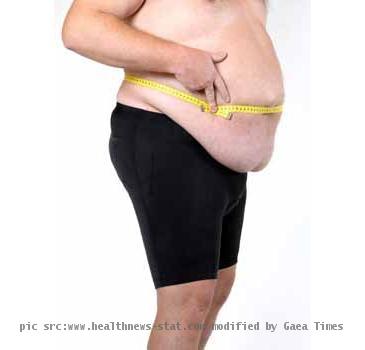Obesity rates: Gap closing between what Americans say they weigh and what measurements show
By Mike Stobbe, APTuesday, August 3, 2010
Are Americans now more honest about their weight?
ATLANTA — Are Americans becoming more honest about their weight?
That theory could explain why the gap appears to be closing in what people say they weigh and what actual measurements report.
A new government telephone survey released Tuesday puts the adult obesity rate at nearly 27 percent and rising. A more scientific survey has already said the rate is 34 percent and holding steady.
Experts believe the 27 percent is probably an underestimate, because it’s based on what people say. People tend to say they weigh less than they actually do and say they are taller than they are.
The fact that it’s catching up to the more accepted 34 percent estimate could suggest people are becoming more accurate when they talk about their girth. It’s one explanation, anyway, said Dr. William Dietz, of the Centers for Disease Control and Prevention.
“It is possible people are paying more attention to their weight and reporting it more accurately,” said Dietz, director of the CDC’s Division of Nutrition, Physical Activity and Obesity.
The new results are based on a telephone survey of about 400,000 people who were asked their height and weight. CDC researchers then calculate whether the person is obese, following a standard formula for body mass index.
Under the formula, a 5-foot-4 woman is obese if she weighs 174 pounds or more, a 5-foot-10 man fits that description if he weighs at least 209 pounds.
The study found that nearly 27 percent of the surveyed adults said they were obese in 2009, up from about 25.5 percent in 2007, a small but statistically significant increase.
Earlier this year, the CDC released results from another study that actually weighed and measured 5,700 adults. It found that 34 percent are obese; results have been similar in the last three surveys.
The differing surveys mean the CDC is reporting that obesity is increasing — and that it’s not.
“We have somewhat contradictory data,” because the studies were done differently and sampled different populations, Dietz said.
There could be several reasons why the telephone survey produced different results, said Dr. K.M. Venkat Narayan, an Emory University public health professor familiar with the two studies.
For example, the phone survey included only people with landline telephones, meaning others with cell phones were not part of the data, he said. It could be that a significant number of people who exclusively use cell phones are obese and not counted.
As for people underreporting their height and weight, “it’s not so much lying,” but rather that they don’t regularly get on a scale, Narayan said.
The new report also found that in nine states at least 30 percent of the adults were obese in 2009. The states were Alabama, Arkansas, Louisiana, Kentucky, Tennessee, Missouri, Oklahoma, West Virginia and Mississippi, the highest at 34 percent. In 2007, only Alabama, Mississippi and Tennessee topped 30 percent.
No states met a national goal for 2010 of limiting obesity to 15 percent. Only Colorado and the District of Columbia were lower than 20 percent, and just barely.
Colorado’s rate of about 19 percent may be due in part to its hiking trails and recreational culture. Another factor may be its Rocky Mountain altitudes, which require people to burn more energy to do routine physical activities, Dietz said during a Tuesday teleconference with reporters.
Washington’s rate — just under 20 percent — could be tied to common use of public transportation there, or to higher rates of breast-feeding and fruit and vegetable consumption, he said.
Online:
CDC report: www.cdc.gov/vitalsigns
Tags: Atlanta, Diseases And Conditions, Georgia, North America, Public Opinion, United States

